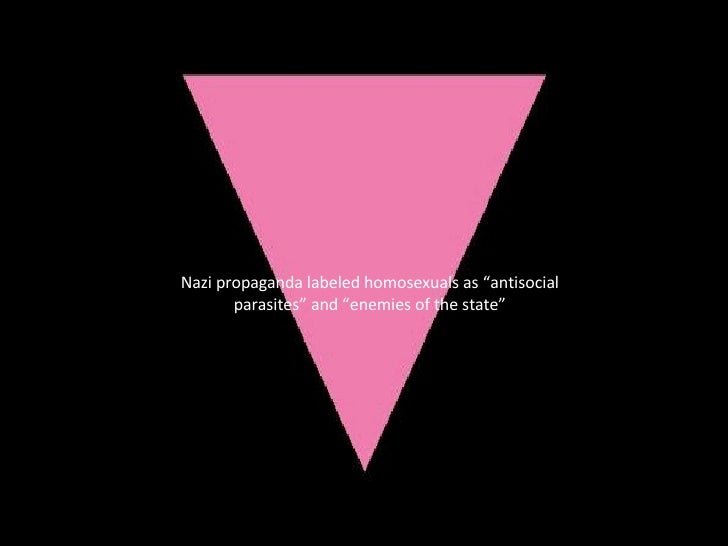Persecution of homosexuals in Nazi Germany and the Holocaust.

Upon the rise of Adolf Hitler and the National Sociaist Workers Party (the Nazi Party)  in Germany, gay men and, to a lesser extent, lesbians, were two of the numerous groups targeted by the Nazis and were ultimately among Holocaust victims. Beginning in 1933, gay organizations were banned, scholarly books about homosexuality, and sexuality in general, were burned, (such as those from the Institut für Sexualwissenschaft, run by Jewish gay rights campaigner Magnus Hirschfeld) and homosexuals within the Nazi Party itself were murdered. The Gestapo compiled lists of homosexuals, who were compelled to sexually conform to the “German norm.”
in Germany, gay men and, to a lesser extent, lesbians, were two of the numerous groups targeted by the Nazis and were ultimately among Holocaust victims. Beginning in 1933, gay organizations were banned, scholarly books about homosexuality, and sexuality in general, were burned, (such as those from the Institut für Sexualwissenschaft, run by Jewish gay rights campaigner Magnus Hirschfeld) and homosexuals within the Nazi Party itself were murdered. The Gestapo compiled lists of homosexuals, who were compelled to sexually conform to the “German norm.”
Between 1933 and 1945, an estimated 100.000 men were arrested as homosexuals, of whom some 50.000 were officially sentenced. Most of these men served time in regular prisons, and an estimated 5.000 to 15.000 of those sentenced were incarcerated in Nazi concentration camps. It is unclear how many of the 5.000 to 15.000 eventually perished in the camps, but leading scholar Rüdiger Lautmann believes that the death rate of homosexuals in concentration camps may have been as high as 60%. Homosexuals in the camps had to weary a pink triangle 
 and were treated in an unusually cruel manner by their captors.
and were treated in an unusually cruel manner by their captors. 
After the war, the treatment of homosexuals in concentration camps went unacknowledged by most countries, and some men were even re-arrested and imprisoned based on evidence found during the Nazi years. It was not until the 1980s that governments began to acknowledge this episode, and not until 2002 that the German government apologized to the gay community. This period still provokes controversy, however. In 2005, the European Parliament adopted a resolution on the Holocaust which included the persecution of homosexuals.
Hitler had long been privately aware that Röhm and his SA top associates were homosexuals; in their defense Hitler had stated that “the SA are a band of warriors and not a moral institution”.
A few days later, the claim of an incipient SA rebellion was publicized and became the official reason for the entire wave of arrests and executions. Indeed, the affair was labelled the “Röhm Putsch” by German historians, although after World War II the claim has usually been qualified as “the alleged Röhm Putsch” or known as the “Night of the Long Knives.”  On 30-06-1934 the SA top was killed in Bad Wiessee and Ernst Röhm was shot on 01-07–06-1934 in prison by SS Obergruppenführer, Theodore Eicke. In a speech on 13 July, Hitler alluded to Röhm’s homosexuality but explained the purge as mainly a defense against treason.
On 30-06-1934 the SA top was killed in Bad Wiessee and Ernst Röhm was shot on 01-07–06-1934 in prison by SS Obergruppenführer, Theodore Eicke. In a speech on 13 July, Hitler alluded to Röhm’s homosexuality but explained the purge as mainly a defense against treason.











Leave a Reply